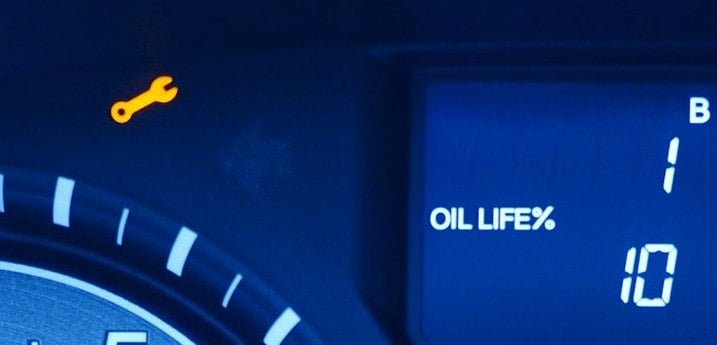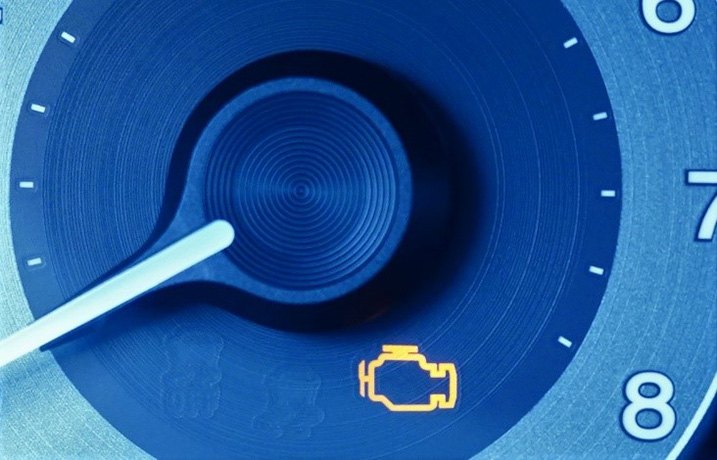At the dawn of the automotive industry, “horseless carriages” had no dashboard instruments at all. That changed as engineers thought it was important for drivers to know about certain operating characteristics of their new-fangled machines. Gauges to monitor various engine operating conditions were added. Since these cars of the early 1900s were not very reliable, it was important for drivers to remain aware of how the vehicle, especially the engine, was performing.
As automobile quality improved, drivers had fewer concerns, and constant monitoring of various parameters became less important. Dashboard gauges were replaced with dashboard warning lights (derisively called “idiot lights”). The good news was that there was now room on the instrument panel for creature comforts like heat and air conditioning controls, and sound system choices. The bad news was that the warning lights didn’t always illuminate until the damage was done.
In today’s world, vehicle quality is better than ever, and we also have more warning lights than ever. There are lights for the seat belt reminder, the key reminder, and the low fuel reminder. Perhaps we have entered a period of sensory overload with all these lights, which has led many drivers to ignore them! So the question becomes, is it truth or myth to say that warning lights are just warnings which can be temporarily ignored until there is time to investigate them?
Our answer is: this is a MYTH.
While SOME warning lights don’t require immediate attention, many of them do, and if ignored, can lead to catastrophic mechanical failures, including the potential for personal injury. Let’s take a look at a few of the warning lights that the average driver should better understand. Space limitations prevent us from discussing every possible warning light; also keep in mind that our photos below are representative of what you might find on your vehicle’s instrument cluster. Your vehicle may have similar or different-looking warning lights.
Service Reminder Light

The yellow symbol in the photo above shows a wrench. Is that something which is intuitively understood by the average driver? It could mean that some some component needs repair. Or it might symbolize that a special tool is needed. In this case, on this Honda, it means that the car is coming due for its next routine maintenance service. On this particular vehicle, a 2017 model, Honda decided that the service intervals would be determined not by mileage, but by an “OIL LIFE%”, determied by both mileage and driving conditions. As you can see on the right hand side of the photo, the OIL LIFE% is down to 10 (it starts at 100), so this car is due for service soon. The light is there to remind the owner to make that service appointment.
Does this Service Reminder Light require immeditate attention? Does driving with it illuminated potentially cause further damage? The answer to both these questions is “no”. But that is not the case for every warning light!
Check Engine Light

What does this yellow symbol look like to you? Does it look like an engine? That is what it is supposed to represent. In this particular case, it serves as the infamous “Check Engine” light. However, different manufacturers use different tell-tales. You might see a different shape, or the words “CHECK ENGINE” spelled out, or the phrase “SERVICE ENGINE SOON”. The light’s purpose is to alert the driver to the fact that the vehicle’s on-board diagnostics have sensed that something is not right. The intention is especially focused on anything that might cause excessive emissions.
We referred to this warning light as “infamous” because of its reputation to illuminate when there is seemingly nothing wrong. One of the most common reasons that the light is triggered is because of a loose gas cap. Drivers have learned that when they see this light, the gas cap is one of the first things to be checked. Often, retightening the gas cap and driving a few miles will make the light go out. Certainly, if the vehicle is suddenly running poorly or exhibiting some kind of operational malady, seek professional service as soon as possible. However, if the car seems to be operating without incident, it still needs to be checked over, but perhaps not with an immediate sense of urgency.
TPMS Light

What do you see in this photo above? Some might state that they see an exclamation point surrounded by a “U” or some kind of clamp, followed by “D D4”. We are displaying the photo in this way on purpose, because it’s nothing more than coincidence that this warning symbol is next to the gearshift indicator (“D” for Drive and “D4” meaning 4th gear).
This is the TPMS light, TPMS meaning “Tire Pressure Monitoring System”. The “U” shape is meant to symbolize a tire. TPMS was introduced on all cars after the U.S. Federal Government issued a regulation requiring it. The system constantly monitors tire pressure in all 4 tires and will illuminate the tell-tale if one or more tires becomes low on air. This is a serious warning and should be heeded. Continuing to drive this way could cause the tire to overheat or could cause the driver to lose control. Tragically, it was real-world incidents which led to the regulation. On modern cars, it is vital that tire pressures be regularly checked and maintained. If you see this light, it is best if you check the pressures in all tires as soon as possible, especially if you find that the vehicle handling has changed.
Battery Light

Look at the red image on the left side of the photo above. The “+” and “-“ signs make it obvious that this is a battery. And most drivers know that their vehicle has a battery. If this light is illuminated while driving, does that mean there is a problem with your battery?
Not exactly. It DOES mean that there is some defect with the vehicle’s charging system, though, and that is serious. The charging system includes the battery, alternator, voltage regulator, and their connections. In most cases, this tell-tale means that the battery is not being adequately charged by the alternator, and continued operation of the vehicle could result in a dead battery, leaving the operator stranded. What’s the fix? It could be the auxiliary drive belt for the alternator (a simple V-belt on older cars, and a more complex serpentine belt on newer cars) or it could indicate a defective alternator. In any case, appearance of this light truly requires immediate attention. Ignoring it certainly means that the car will stop running in a short while.
Oil Pressure Light
The 2nd symbol in the above photo, on the right, shows an oil can with an oil drip from the spout. This is another symbol that may not be immediately recognizable to drivers. I’ve personally spoken to vehicle owners who presume that this is the “oil level light”. This is not the case! Up until very recently, cars did not have engine oil level indicators on the instrument panel. The light above is the oil pressure light, and of all the warning lights discussed in this article, this is the most serious one. Should this light illuminate while driving, you should pull off the road and shut down the engine as quickly as possible. Loss of engine oil pressure is a serious malady, and continued operation, even for a minute, could cause major engine damage.
Once the engine is off, the oil level should be checked. If it is low, you can add oil to bring it back to the “full” mark on the dipstick. Beware, though, that if the oil pressure got low enough to trigger the light, you may need to add 3 or more quarts of oil. Once it’s full again, you can try to re-start the engine, but keep an eye on that oil pressure light. If it is still on, shut down the engine immediately and call for a tow. Any continued driving will more than likely result in significant damage to internal engine parts.
Note that in our final two examples, the light is red, while in the examples prior, the light is yellow. In this case, the manufacturer is using yellow to indicate a less-serious “caution” and the red to indicate a more serious “warning”. As a final point, the vehicle owner/operator is best served by referring to the owner’s manual for an understanding of the warning lights and symbols on their particular year, make, and model vehicle.
Many of the parts needed to complete the repairs called out by these warning lights are available at CARiD. We have a great stock of oil filters for your mileage services, TPMS sensors for your tires, alternators and alternator drive belts, and motor oil and other fluids. We’re here to help, and if you have questions about what your car might need, you can call, email, or text us. We are car people too, and remember, at www.CARiD.com, You Are What You Drive!

